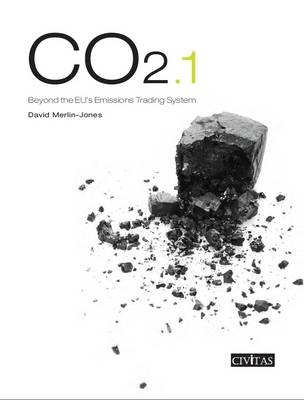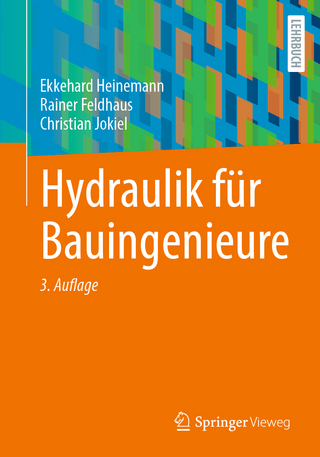
CO2.1
Civitas (Verlag)
978-1-906837-34-1 (ISBN)
- Titel ist leider vergriffen;
keine Neuauflage - Artikel merken
The EU's Emissions Trading System (EU ETS) is the flagship tool of European environmental policy, designed to reduce carbon dioxide emissions swiftly and inexpensively. In this report, David Merlin-Jones argues that the EU ETS fails on both counts: it provides only marginal emissions reductions and at a high cost to businesses and consumers. The EU ETS pushes up energy bills, increasing fuel poverty, while power companies make billions in windfall profits. Vested interests have all but paralysed the effectiveness of EU ETS, with banks making billions out of playing the carbon credit market. Criminal activity is rife, at one point constituting up to 90 per cent of all EU ETS market activity. Aviation is supposed to come under EU ETS restrictions from 2012, but the specifics are still unknown, despite tickets already being on sale for 2012. Restrictions will apply to all airlines coming into and out of the EU, not only those based there. Trade wars are imminent: the US, China and Russia have all warned that they will take legal action to protect themselves from such charges. Crucially, the EU ETS fails to reduce emissions where they matter: on a global scale.
By raising production costs for energy-intensive industries in the EU, it forces them to emigrate to countries where they can operate without heavy energy surcharges. Countries such as India, Russia and China have cheap fossil-fuel sourced energy, with no emission restrictions imposed on industry. Factories that relocate there will be producing more CO2 than they would in the EU - as well as taking thousands of jobs with them. The EU ETS is tied to the UN-backed Clean Development Mechanism (CDM), which allows Europe to export its emission obligations to the developing world, in a manner tantamount to environmental imperialism. The CDM perversely incentivises emissions to be produced for their own sake, just so that they can be destroyed, and entire companies have emerged to do this. Merlin-Jones argues that the EU ETS will have no effect on many companies' emissions until 2016-18, over a decade after it came into force. It is so ineffective and expensive that attempts to patch it up are doomed to failure. A new approach to carbon reduction is required. He proposes a new flat carbon tax to replace the EU ETS and all other green levies and taxes.
He argues that the proceeds of the tax should be channelled into investment in low-carbon energy sources such as marine power, advanced nuclear power and concentrated solar power with the potential to rival the cost of fossil fuels by 2030. This tax structure is cheaper and more effective than current regulations will ever be, and is the only realistic way to meet the target of reducing UK CO2 emissions by 80 per cent by 2050. If low-carbon power becomes economically viable without subsidy, it will succeed by market forces, without the need for treaties, subsidies or regulations.
David Merlin-Jones is Director of the Wealth of Nations Project. He is a graduate from Exeter College, University of Oxford where he studied modern history. He joined Civitas in 2010 as a Research Fellow, focusing on economic issues and, in particular, British manufacturing and energy. He became Director of the Wealth of Nations Project in November 2011. He has previously authored Chain Reactions: How the chemical industry can shrink our carbon footprint (2011) and The Big Problem for Small Business: The Case for an Industry Bank (2011) and other Civitas reports including Rock Solid? An investigation into the British cement industry (2010) and Economic Growth - could the Government do more? (2011) (with David Green).
About the author. Acknowledgments. List of Acronyms. List of Energy Units. Foreword by Professor Michael Laughton. Preface. Executive Summary. Introduction. PART ONE Diagnosis: The Problems with the EU ETS. Chapter 1: The Dilemma of the Cap-and-trade Model. Chapter 2: The Failure of the Clean Development Mechanism. Chapter 3: Profiteering from Good Intentions. Chapter 4: The International Perspective. Chapter 5: Underestimated Complication and Political Opportunism. PART TWO Prognosis: The EU ETS is Incurable. Chapter 6: Ineffectively Propping up the EU ETS. PART THREE Prescription: Investment in Low-cost, Low-carbon Energy. Chapter 7: Low-cost, Low-carbon Energy as the Goal. Chapter 8: The Timespan of Real Decarbonisation. Chapter 9: The Means to the End: a Trans-EU Carbon Tax. Chapter 10: Two Interim Solutions of 'Low(ish)-carbon, Low(ish)-cost' Energy. Conclusion. Appendix 1: The Carbon Tax - Options for Implementation. Appendix 2: The Carbon Tax - Statistics. Appendix 3: An Installation and its Allocations - Understanding the ETS in terms of One Company's Behaviour. Appendix 4: The Glut Graph. Appendix 5: No Need to Act on Emissions until 2016-18. Appendix 6: How to Account for Nuclear Capital Costs. Appendix 7: The Emissions Saved from Switching from Coal to Gas. Bibliography. Notes.
| Erscheint lt. Verlag | 3.1.2012 |
|---|---|
| Zusatzinfo | col. Illustrations |
| Verlagsort | London |
| Sprache | englisch |
| Maße | 189 x 246 mm |
| Themenwelt | Naturwissenschaften ► Biologie ► Ökologie / Naturschutz |
| Technik ► Elektrotechnik / Energietechnik | |
| ISBN-10 | 1-906837-34-1 / 1906837341 |
| ISBN-13 | 978-1-906837-34-1 / 9781906837341 |
| Zustand | Neuware |
| Informationen gemäß Produktsicherheitsverordnung (GPSR) | |
| Haben Sie eine Frage zum Produkt? |
aus dem Bereich


